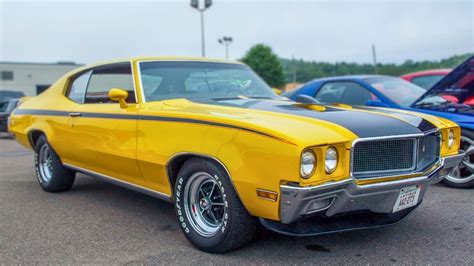
A decades-lost 1956 Mercedes-Benz 300 SL Gullwing, once owned by Jay Leno but sold off long ago, has resurfaced after years of being considered missing, and Leno recently unveiled the meticulously restored vehicle.
Jay Leno, the renowned comedian and car enthusiast, recently celebrated the rediscovery and restoration of a 1956 Mercedes-Benz 300 SL Gullwing he previously owned but sold many years ago. The car, considered exceptionally rare due to its original condition and specific features, had been absent from the public eye for a considerable period, leading many to believe it was lost to time. Leno’s unveiling marked the culmination of an extensive restoration project that returned the Gullwing to its former glory.
The 1956 Mercedes-Benz 300 SL Gullwing is an icon of automotive design and engineering, celebrated for its distinctive upward-swinging doors and high-performance capabilities. Originally produced between 1954 and 1957, the Gullwing became an instant classic, representing the pinnacle of Mercedes-Benz’s post-war innovation. Its rarity and historical significance have made it a highly sought-after collector’s item, fetching substantial prices at auctions and private sales.
Leno’s connection to the Gullwing dates back several decades when he acquired the car and enjoyed it as part of his extensive collection. However, at some point, the Gullwing was sold, and its whereabouts remained largely unknown. Over the years, rumors and speculation circulated about the car’s fate, with some fearing it had been neglected or even destroyed. The rediscovery of the Gullwing, therefore, came as a pleasant surprise to Leno and the broader automotive community.
The restoration of the Gullwing was a painstaking process that involved a team of experts dedicated to preserving the car’s original features and specifications. The restoration team meticulously disassembled the car, addressing any mechanical or cosmetic issues. This included repairing or replacing damaged components, refurbishing the interior, and repainting the exterior to match its original factory color. The goal was to return the Gullwing to its original condition, ensuring that it remained a faithful representation of the iconic sports car.
During the unveiling, Leno shared details about his history with the car and the restoration process, emphasizing the importance of preserving automotive history. He highlighted the unique features of the 1956 Gullwing, such as its inline-six engine, tubular space-frame chassis, and innovative fuel injection system. Leno also discussed the challenges of restoring such a rare and complex vehicle, noting the difficulty in sourcing original parts and ensuring the accuracy of the restoration work.
The rediscovery and restoration of Leno’s former Gullwing underscore the enduring appeal of classic cars and the dedication of enthusiasts who strive to preserve them for future generations. The Gullwing’s return to prominence serves as a reminder of the automotive industry’s rich heritage and the importance of celebrating iconic vehicles like the 1956 Mercedes-Benz 300 SL.
Historical Significance of the Mercedes-Benz 300 SL Gullwing
The Mercedes-Benz 300 SL Gullwing is more than just a car; it represents a significant chapter in automotive history. Introduced in 1954, the Gullwing was based on the company’s successful W194 racing car, which had achieved numerous victories in prestigious motorsport events, including the 24 Hours of Le Mans and the Carrera Panamericana.
The decision to produce a road-going version of the W194 was driven by Max Hoffman, an influential automobile importer who recognized the potential demand for a high-performance sports car in the American market. Hoffman convinced Mercedes-Benz to develop the 300 SL, which quickly became a sensation upon its debut.
The Gullwing’s distinctive design, characterized by its upward-swinging doors, was not merely an aesthetic choice. The car’s tubular space-frame chassis, designed for lightness and rigidity, made it impossible to fit conventional doors. The solution was to hinge the doors at the roof, creating the iconic “gullwing” appearance.
Under the hood, the 300 SL was powered by a 3.0-liter inline-six engine that featured Bosch mechanical fuel injection, a technological innovation that was relatively rare at the time. The engine produced approximately 215 horsepower, enabling the Gullwing to reach a top speed of around 160 miles per hour, making it one of the fastest production cars of its era.
The Gullwing’s performance and striking design made it a favorite among celebrities, racing drivers, and affluent car enthusiasts. Notable owners included Clark Gable, Tony Curtis, and Rob Walker. The car’s success helped to solidify Mercedes-Benz’s reputation as a manufacturer of high-quality, technologically advanced automobiles.
Restoration Challenges and Techniques
Restoring a classic car like the 1956 Mercedes-Benz 300 SL Gullwing is a complex and challenging undertaking that requires a high level of skill, expertise, and attention to detail. The goal of the restoration is to return the car to its original condition, preserving its historical accuracy and authenticity.
One of the primary challenges in restoring a Gullwing is sourcing original parts. Many of the components used in the car’s construction are no longer readily available, requiring restorers to search for rare parts or fabricate them from scratch. This can be a time-consuming and expensive process, but it is essential to maintaining the car’s originality.
Another challenge is dealing with the effects of age and wear. Over time, the Gullwing’s body panels can become corroded, the interior trim can deteriorate, and the mechanical components can wear out. Restorers must carefully assess the condition of each component and determine the best course of action, whether it be repairing, rebuilding, or replacing it.
The restoration process typically begins with a thorough inspection of the car to identify any areas that require attention. The car is then disassembled, and each component is cleaned, inspected, and evaluated. Damaged or worn parts are either repaired or replaced with original or reproduction parts.
The bodywork is carefully restored, with any rust or corrosion removed and the panels reshaped to their original contours. The body is then repainted in its original color, using techniques that replicate the factory finish.
The interior is also meticulously restored, with the seats reupholstered, the carpets replaced, and the dashboard and trim refinished. The mechanical components, including the engine, transmission, and suspension, are rebuilt to ensure that they perform as new.
Throughout the restoration process, restorers must pay close attention to detail, ensuring that every aspect of the car is accurate and authentic. This requires a deep understanding of the Gullwing’s original specifications and manufacturing processes.
Jay Leno’s Automotive Passion
Jay Leno is widely known for his passion for automobiles, which has manifested in his extensive car collection and his popular CNBC television show, “Jay Leno’s Garage.” Leno’s enthusiasm for cars dates back to his childhood when he would spend hours tinkering with engines and learning about automotive mechanics.
Over the years, Leno has amassed a diverse collection of vehicles, ranging from classic cars and vintage motorcycles to modern supercars and steam-powered machines. His collection includes rare and historically significant vehicles, such as a 1909 Stanley Steamer, a 1930 Bentley Speed Six, and a 1963 Chrysler Turbine Car.
Leno’s passion for cars extends beyond simply collecting them. He is also a skilled mechanic and enjoys working on his vehicles himself. He has a well-equipped workshop where he spends countless hours maintaining and restoring his cars.
“Jay Leno’s Garage” provides a platform for Leno to share his love of cars with a wider audience. The show features interviews with automotive experts, test drives of new and classic vehicles, and in-depth looks at Leno’s own collection.
Leno’s involvement with the rediscovery and restoration of his former 1956 Mercedes-Benz 300 SL Gullwing is a testament to his enduring passion for automobiles and his commitment to preserving automotive history. His efforts to restore and showcase classic cars like the Gullwing help to ensure that they will be appreciated by future generations.
The Resale Value and Collectibility of the 300 SL Gullwing
The Mercedes-Benz 300 SL Gullwing is one of the most valuable and collectible cars in the world. Its rarity, historical significance, and iconic design have made it a highly sought-after item among collectors.
The value of a 300 SL Gullwing can vary depending on its condition, originality, and provenance. Cars that are in excellent condition and retain their original components typically command the highest prices. Gullwings with a well-documented history and celebrity ownership can also fetch a premium.
In recent years, the value of 300 SL Gullwings has steadily increased, reflecting the growing demand for classic cars among investors and collectors. At auctions, Gullwings have sold for prices ranging from $1 million to over $4 million.
The collectibility of the 300 SL Gullwing is also driven by its limited production numbers. Only around 1,400 Gullwings were built between 1954 and 1957, making them relatively rare compared to other classic cars.
The Gullwing’s iconic design and advanced engineering have also contributed to its enduring appeal. Its upward-swinging doors, tubular space-frame chassis, and fuel-injected engine were groundbreaking innovations for their time.
The Gullwing’s racing heritage also adds to its collectibility. The car was based on the successful W194 racing car, which achieved numerous victories in prestigious motorsport events. This connection to motorsport history makes the Gullwing particularly appealing to collectors who appreciate the car’s performance and pedigree.
The Restoration Process: A Deep Dive
The restoration of Jay Leno’s former 1956 Mercedes-Benz 300 SL Gullwing was a meticulous and comprehensive undertaking that involved a team of skilled professionals. The goal of the restoration was to return the car to its original factory condition, preserving its historical accuracy and authenticity.
The restoration process began with a thorough assessment of the car’s condition. The restoration team carefully inspected every aspect of the car, from the bodywork and interior to the mechanical components and electrical system. This assessment helped to identify any areas that required attention and to develop a detailed restoration plan.
Once the assessment was complete, the car was completely disassembled. Each component was carefully removed and cataloged, ensuring that it could be properly reassembled later. The disassembly process also allowed the restoration team to thoroughly clean and inspect each part.
The bodywork was one of the most challenging aspects of the restoration. The Gullwing’s aluminum body panels are prone to corrosion and damage, and repairing them requires a high level of skill and expertise. The restoration team carefully removed any rust or corrosion, reshaped the panels to their original contours, and repaired any dents or damage.
Once the bodywork was complete, the car was repainted in its original factory color. The restoration team used high-quality paints and techniques to replicate the original finish. The paint was applied in multiple coats, with each coat carefully sanded and polished to achieve a smooth, flawless surface.
The interior was also meticulously restored. The seats were reupholstered in their original leather, the carpets were replaced with new material that matched the original pattern, and the dashboard and trim were refinished to their original luster.
The mechanical components, including the engine, transmission, and suspension, were completely rebuilt. Each component was disassembled, cleaned, inspected, and reassembled with new or refurbished parts. The engine was carefully tuned to ensure that it performed as new.
The electrical system was also thoroughly inspected and repaired. Any damaged or worn wiring was replaced, and the original electrical components were restored to their original condition.
Throughout the restoration process, the restoration team paid close attention to detail, ensuring that every aspect of the car was accurate and authentic. This required extensive research and consultation with experts to ensure that the restoration was faithful to the car’s original specifications.
The restoration of Jay Leno’s former 1956 Mercedes-Benz 300 SL Gullwing is a testament to the dedication and skill of the restoration team. Their efforts have resulted in a stunning example of this iconic sports car, which will be enjoyed by future generations.
The Future of Classic Car Restoration
The restoration of classic cars like the Mercedes-Benz 300 SL Gullwing is a growing industry, driven by the increasing demand for these vehicles among collectors and enthusiasts. As more and more classic cars are restored, the industry is evolving and adapting to new challenges and opportunities.
One of the key trends in classic car restoration is the increasing use of technology. Modern tools and techniques, such as 3D scanning, computer-aided design (CAD), and 3D printing, are being used to create accurate reproductions of original parts and to streamline the restoration process.
Another trend is the growing focus on sustainability. Restorers are increasingly using eco-friendly materials and techniques to minimize the environmental impact of their work. This includes using water-based paints, recycled materials, and energy-efficient equipment.
The future of classic car restoration also depends on the availability of skilled professionals. The industry faces a shortage of qualified restorers, particularly those with expertise in working on older vehicles. To address this shortage, vocational schools and training programs are being developed to educate and train the next generation of restorers.
The classic car restoration industry also faces challenges related to the increasing complexity of modern vehicles. As cars become more technologically advanced, restoring them requires a greater understanding of electronics, computer systems, and other complex components.
Despite these challenges, the future of classic car restoration looks bright. The demand for these vehicles is expected to remain strong, and the industry is adapting to new technologies and techniques to meet this demand. The restoration of classic cars like the Mercedes-Benz 300 SL Gullwing is not only a way to preserve automotive history but also a way to create lasting value for collectors and enthusiasts.
The Enduring Legacy of the Gullwing
The 1956 Mercedes-Benz 300 SL Gullwing continues to captivate car enthusiasts and collectors worldwide, solidifying its place as one of the most iconic and influential automobiles ever created. Its blend of groundbreaking design, technological innovation, and racing pedigree has cemented its legacy as a true automotive masterpiece.
The Gullwing’s influence can be seen in countless sports cars that followed, with its lightweight construction, aerodynamic styling, and high-performance engine serving as inspiration for designers and engineers. Its impact on the automotive industry is undeniable, and its legacy will continue to inspire future generations of car enthusiasts.
The rediscovery and restoration of Jay Leno’s former Gullwing serves as a reminder of the importance of preserving automotive history and celebrating the vehicles that have shaped the automotive landscape. The Gullwing’s return to prominence is a testament to its enduring appeal and its status as a true automotive icon.
The story of the Gullwing is a story of innovation, passion, and dedication. It is a story of a car that broke boundaries and redefined what was possible in the world of automotive design and engineering. It is a story that will continue to be told for generations to come, ensuring that the legacy of the Mercedes-Benz 300 SL Gullwing lives on.
FAQ: Jay Leno’s Lost Gullwing: Ultra-Rare ’56 Mercedes Found!
-
What makes the 1956 Mercedes-Benz 300 SL Gullwing so rare and valuable? The 1956 Mercedes-Benz 300 SL Gullwing is rare due to its limited production numbers (approximately 1,400 built between 1954 and 1957), its iconic design featuring upward-swinging doors, its advanced engineering including a tubular space-frame chassis and fuel-injected engine, and its historical significance as a road-going version of the successful W194 racing car. These factors contribute to its high value among collectors.
-
Why did Jay Leno sell his original Gullwing, and how did it resurface? The original source does not explicitly state why Jay Leno sold his Gullwing. However, the article highlights that the car resurfaced after being absent from the public eye for many years. The rediscovery came as a pleasant surprise to Leno and the automotive community. The exact circumstances of its rediscovery are not detailed in the provided source.
-
What were some of the key challenges in restoring the 1956 Mercedes-Benz 300 SL Gullwing? Key challenges in restoring a 1956 Mercedes-Benz 300 SL Gullwing include sourcing original parts (many are no longer readily available), dealing with the effects of age and wear (corrosion, deteriorated interior trim, worn mechanical components), and ensuring historical accuracy throughout the restoration process. The restoration requires specialized skills and expertise.
-
How does the restoration of classic cars like the Gullwing contribute to preserving automotive history? The restoration of classic cars preserves automotive history by returning historically significant vehicles to their original condition, ensuring they are maintained for future generations. This allows enthusiasts and the public to appreciate the design, engineering, and cultural impact of these vehicles. It also helps to maintain the skills and knowledge required to work on older cars.
-
What role does Jay Leno play in promoting and preserving automotive heritage? Jay Leno plays a significant role in promoting and preserving automotive heritage through his extensive car collection, his television show “Jay Leno’s Garage,” and his involvement in restoring and showcasing classic cars. He shares his passion for automobiles with a wide audience, educating viewers about the history, engineering, and cultural significance of various vehicles. His efforts help to ensure that classic cars are appreciated and preserved for future generations.









